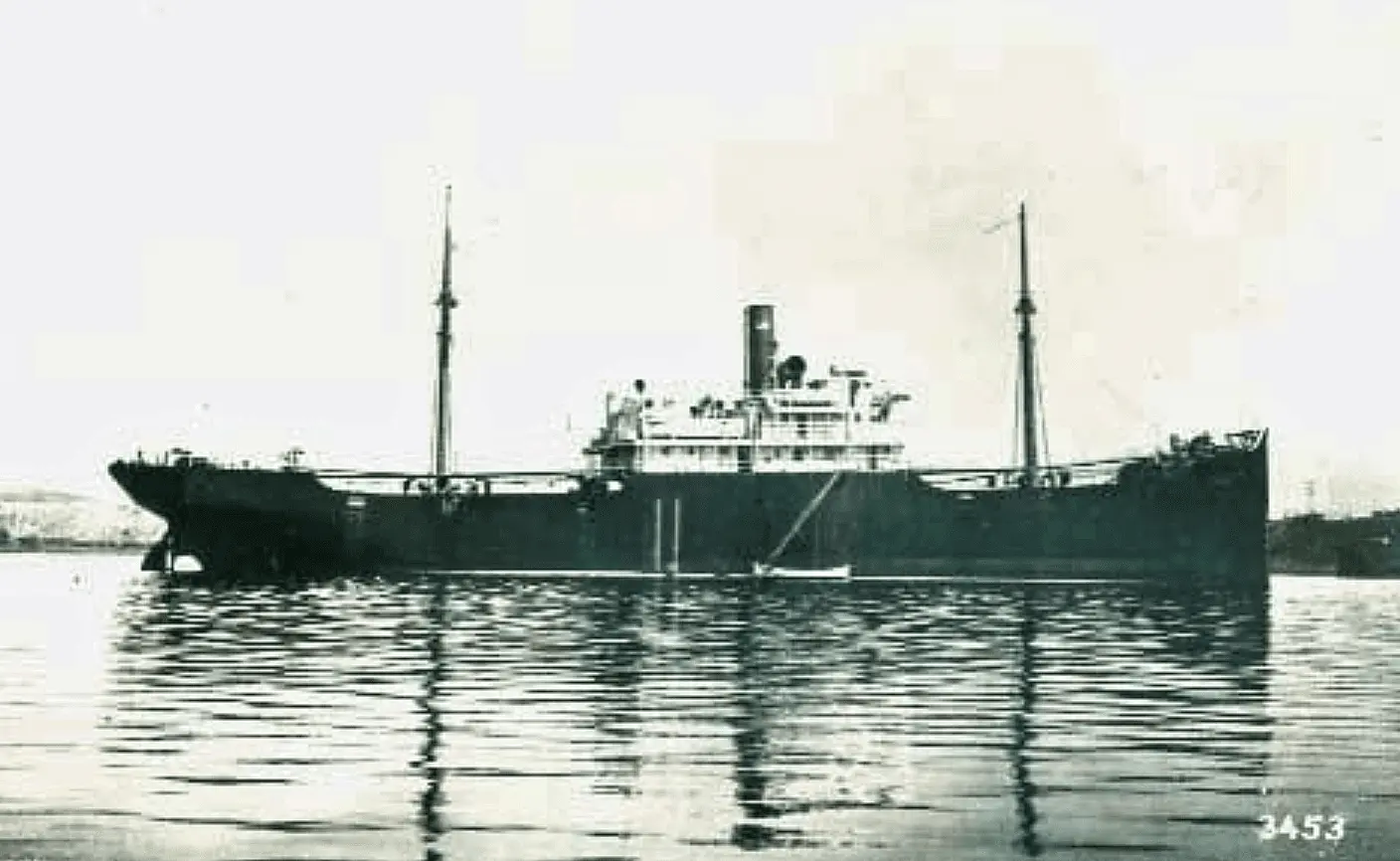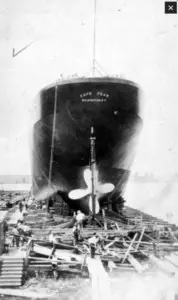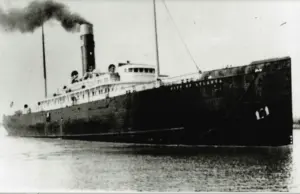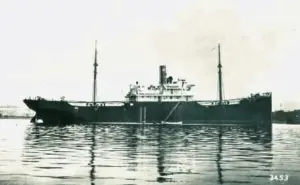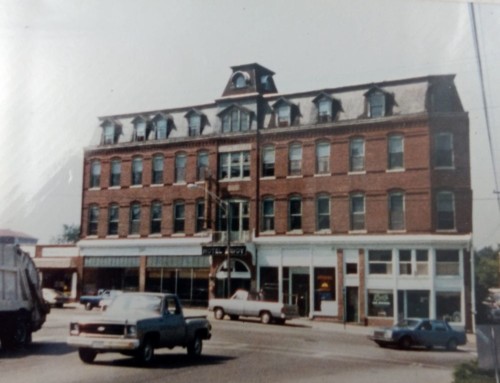Narragansett Bay is the scene of many hundreds of shipwrecks. The exact number is not known but one of the most unusual is the wreck of the Cape Fear because the Cape Fear was a ship made of cement.
The cement freighter was 266 feet long and weighed 2800 tons. Her hull was five inches thick and she was built by the Liberty Shipbuilding Company of Wilmington, North Carolina. She was built at a shipyard in Brunswick, Georgia. Her construction took three months and she cost $375,000 to build. At the time steel was needed for the construction of warships so it was in short supply. The U.S. government approved the construction of 24 experimental concrete freighters to help the war effort by bringing supplies to armies in Europe but only a dozen ships, including the Cape Fear, were built before the war ended.
On August 29, 1920, almost 100 years ago on Narragansett Bay the Cape Fear had a date with history. She was heading south on a collision course with another ship. The other ship was the steel, 337-foot-long, 5,269-ton passenger liner, City of Atlanta.
The City of Atlanta was under the command of Captain Bertram Garfield. She was steaming up Narragansett Bay to Providence when Captain Garfield noticed the lights of the Cape Fear approaching and signaled with one blast of his whistle that he would pass on the port side. He later said that the Cape Fear responded with one blast of her whistle indicating acknowledgement of his signal. For some unknown reason, probably just a communications error, the Cape Fear cut in front of the City of Atlanta. Although Captain Garfield put his engine in full reverse the ships were in narrow waters and there was nothing more he could do to avoid a collision.
The City of Atlanta’s steel bow struck the Cape Fear with incredible force and while cement is a strong material it is also brittle. The Cape Fear shattered like china and was almost cut in half. Water flooded into the concrete ship. One of the downfalls of building ships out of cement is that cement is very heavy and she sank; bow first, in less than three minutes.
The crew of the City of Atlanta attempted a rescue by throwing lines to the seaman on the Cape Fear but only a few men were able to grab them. The other crewmen were thrown into the chilly water and struck by debris or sucked under the Cape Fear as she went down. Captain Garfield was one of the 17 who were saved, suffering a deep scalp wound; nineteen of her crew went down with the ship. The bow of the City of Atlanta had been severely damaged in the collision but because the steel was only bent by the collision she was able to make it safely to Providence.
After the war the experiment of building ships out of concrete was abandoned. Even though the ships were inexpensive to build they were heavy and slow. Of the twelve ships of the stone fleet that were built, the fate of only a few of the of the fleet is known.
The most famous of the stone fleet is the SS Atlantus. The steamer was launched on December 5, 1918, and was the second concrete ship constructed in the World War I Emergency Fleet. The Atlantus was used to transport American troops back home from Europe and also to transport coal to New England. After two years of service, the ship was retired in 1920 to a salvage yard in Virginia.
In 1926 the Atlantus was bought from the scape yard and towed to Cape May, New Jersey to be used as a ferry dock. On June 8 of the same year, a storm hit and the ship broke free of her moorings and ran aground 150 feet off the coast of Sunset Beach. Several attempts were made to free the ship, but none were successful. Because she lay right off the popular Jersey shore beach millions of beachgoers and tourists have viewed the ship over the years.
Another well-known member of the stone fleet is the SS Sapona. She was sold for scrap to Carl Fisher, one of the developers of Miami Beach. She was initially used as a casino and then purchased in 1924 by Bruce Bethel. Bethel moved the ship to Bimini, in the Bahamas, using her as a warehouse for alcohol during the era of Prohibition. Two years later, in 1926, the ship ran aground in a hurricane and broke apart. During World War II the wreck was used for target practice by the U.S. Army Air Corps and U.S. Navy.
Today little of the concrete is left on the hull because of the effects of bombing and weathering. The Sapona lies in fifteen feet of water on a reef and is a popular scuba diving site. The eerie skeletal remains have been used as a backdrop in a number of movies.
Of all the concrete ships that once sailed the oceans the Cape Fear’s fate remains the most tragic. Lying upright on the bottom, 180 feet down at the mouth of Narragansett Bay, it is a dark concrete mausoleum for its 19 crew still waiting to go home.
Twenty-two years after the collision with the Cape Fear the City of Atlanta was torpedoed by a German U-boat off the coast of North Carolina. 43 brave seamen were lost,along with the Captain, who was last seen giving orders trying to launch the lifeboats.
